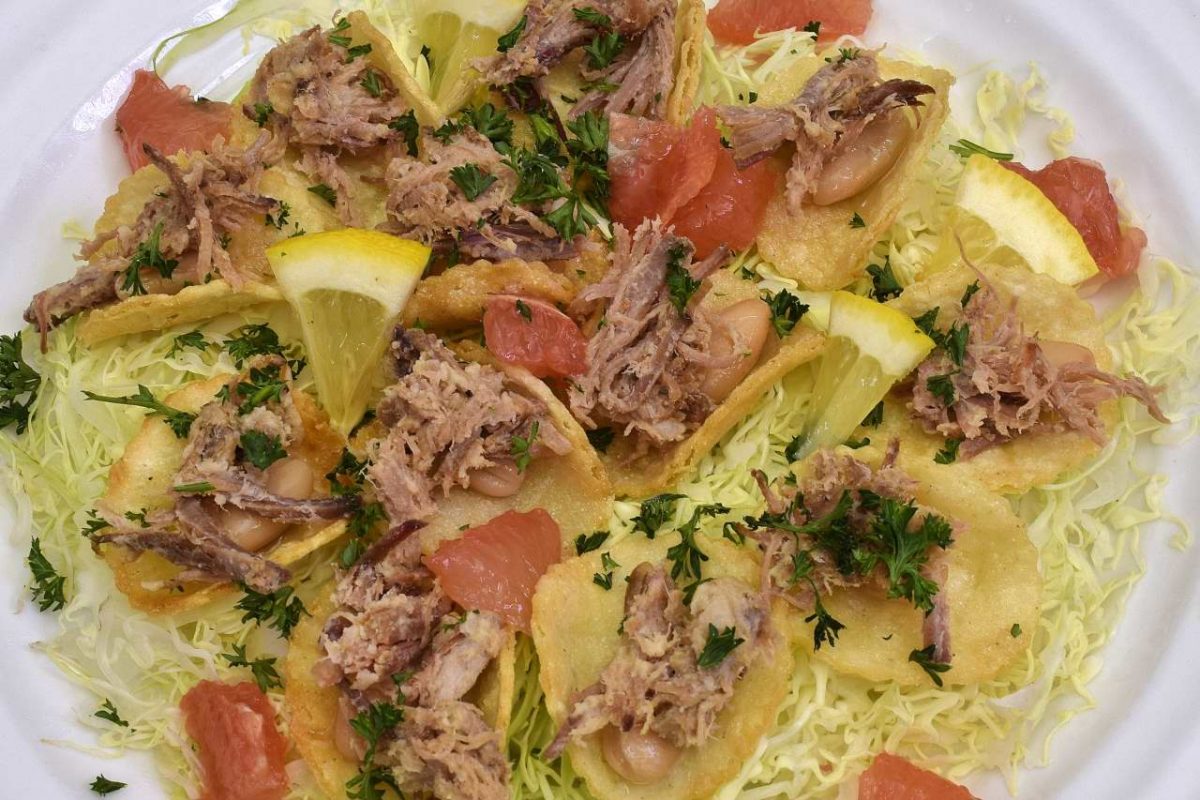Serves 8 as an appetizer/snack course.
Level of difficulty 3.9
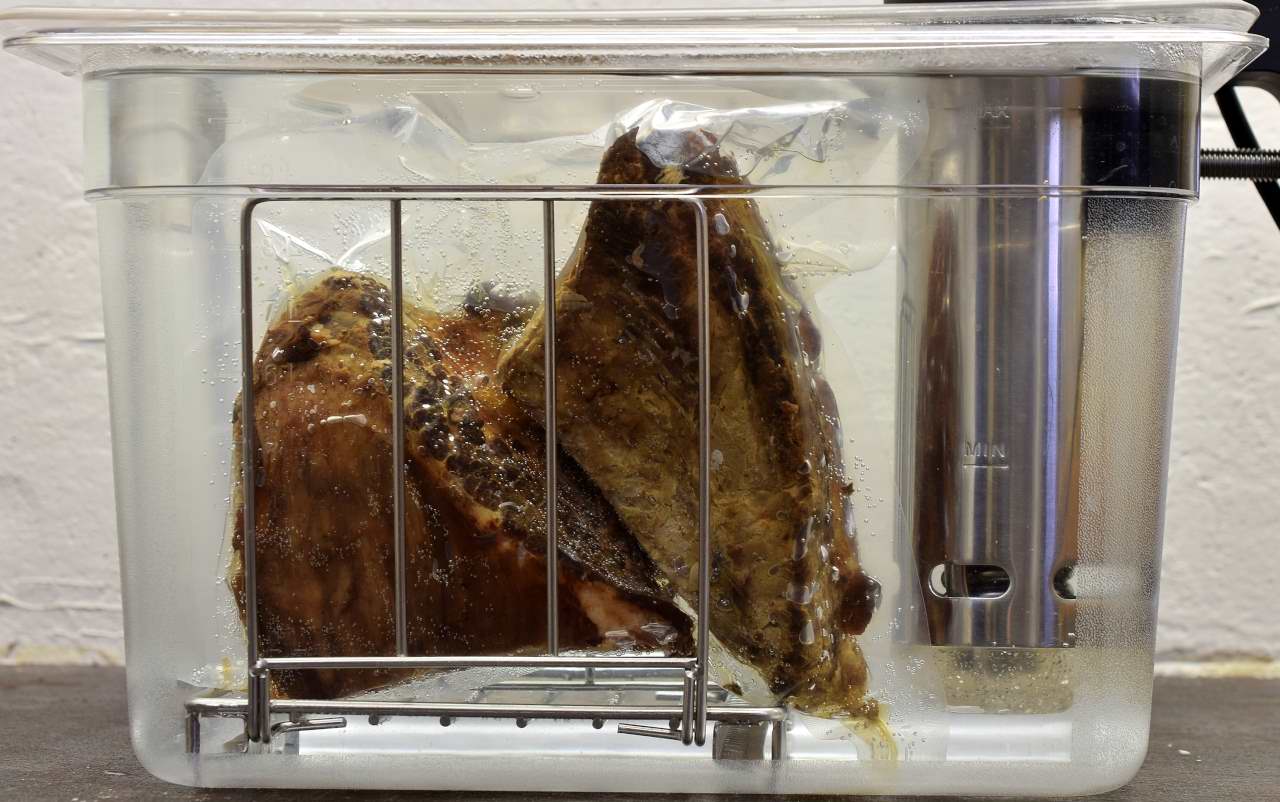
Procedure:
Preheat the sous vide bath to
140 F/60 C
Seal the brisket in a vacuum bag. Process sous vide at 140 F/60 C for
24 hours.
Increase the heat to
165 F and continue processing for 6 hours more.
This extended double process converts all the collagen in the protein to gelatin without compromising the structural integrity of the brisket. When the interval has elapsed, remove the pouch from the bath, cut a corner of the bag and drain the juices into a measuring cup. Check the measurement of the juices and add enough sous jus, neutral stock or water to bring the total amount of the liquid to 3 cups.
Add this liquid to the sauce pan along with the white wine. Finish removing the meat from the pouch and add to the pan. Simmer covered for 2-4 hours or until the meat offers no resistance to being pulled apart with 2 forks.
Chasing the dream
This technique is fairly complex and some dedication to precision is required–hence the high level of difficulty. Once the pouch has been removed from the bath, this recipe must be executed without interruption for purposes of function and food safety. In other words, if you get tired or distracted and decide to finish the process tomorrow, it may not work!
Remove the meat from the pot into the bowl of a Kitchenaid type mixer and set aside for the moment. Line the colander with paper towels and put above the other sauce pot. Moisten the paper towels so that the juices have nothing to cling to when being strained.

Pour the broth through the paper towels–this will remove the coagulated albumins and myoglobin. The stock in the pan should be perfectly clear.

Simmer the broth to reduce it to exactly 2 cups.
Time to shred
While the broth simmers, use the paddle attachment to break apart the meat–this process takes only a few seconds so do not multi task. There is a very fine distinction between fully shredded and mashed beyond recognition. Set aside–do not refrigerate yet.
Add the salt, the gelatin and sodium alginate to the broth–expect it to clump, this is normal. Bring just to a simmer, add the cold butter, and turn off the burner. When the butter has melted, insert the stick blender all the way to the bottom of the pot and turn it on. DO NOT LIFT IT UP. You will see the melted butter on the top slowly be pulled into the liquid below. The gelatin and alginate will help keep the emulsion stable.
Assembly
Add the shredded meat to the emulsion and divide among 4 ceramic dishes or small souffle cups, no deeper than 2″/6 cm. This helps the rillette chill in a 40 F/4 C refrigerator in less than one hour. Try to dedicate a shelf in the refrigerator to the containers as close to the refrigerator compressor as possible. Leave space between the dishes so that air can circulate. This is best way to cool this dish safely.
Service
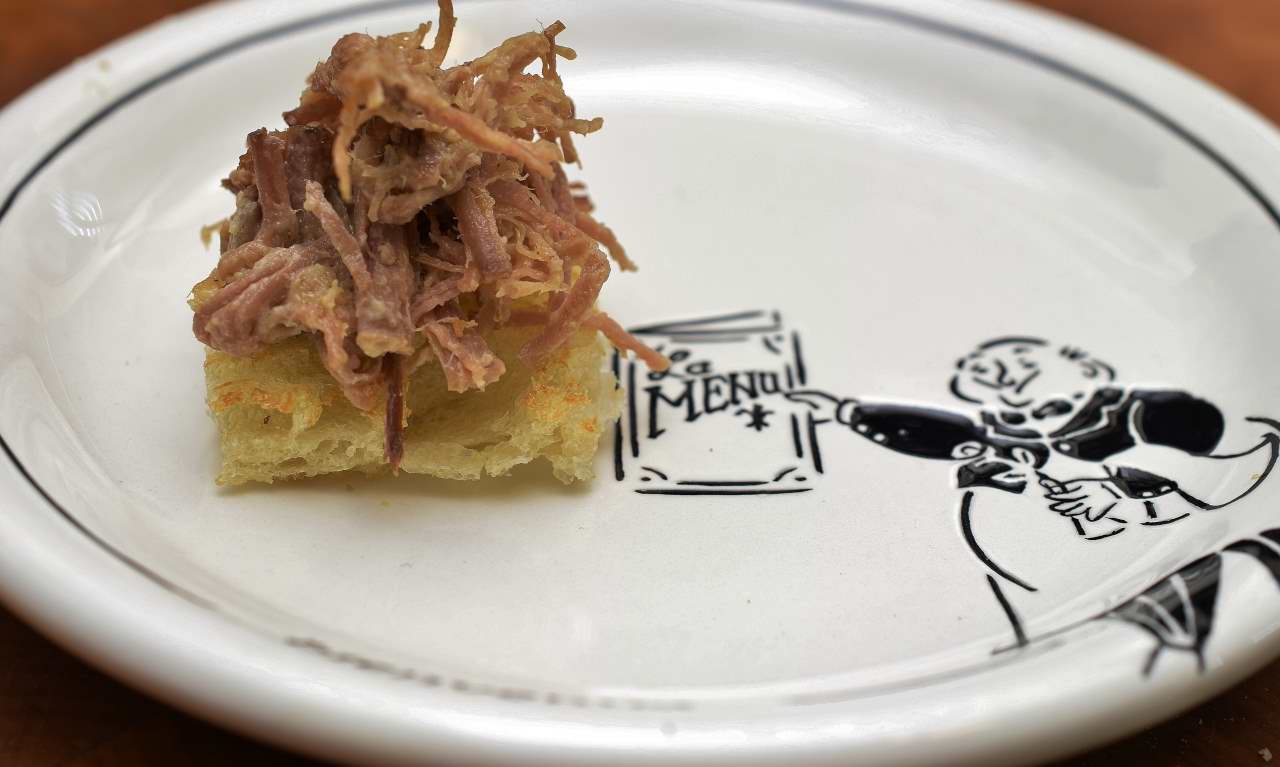
Rillettes are usually served simply with sliced baguette. This is the French equivalent of what English speakers call a “snack” and is not intended to be visually impressive. Because of the emulsion, the threads tend to stick together.
Using two forks or even large tweezers helps to avoid an overly chunky appearance. Properly fluffed, the rillette has a unique texture, full of flavor as the coating dissolves on the tongue. 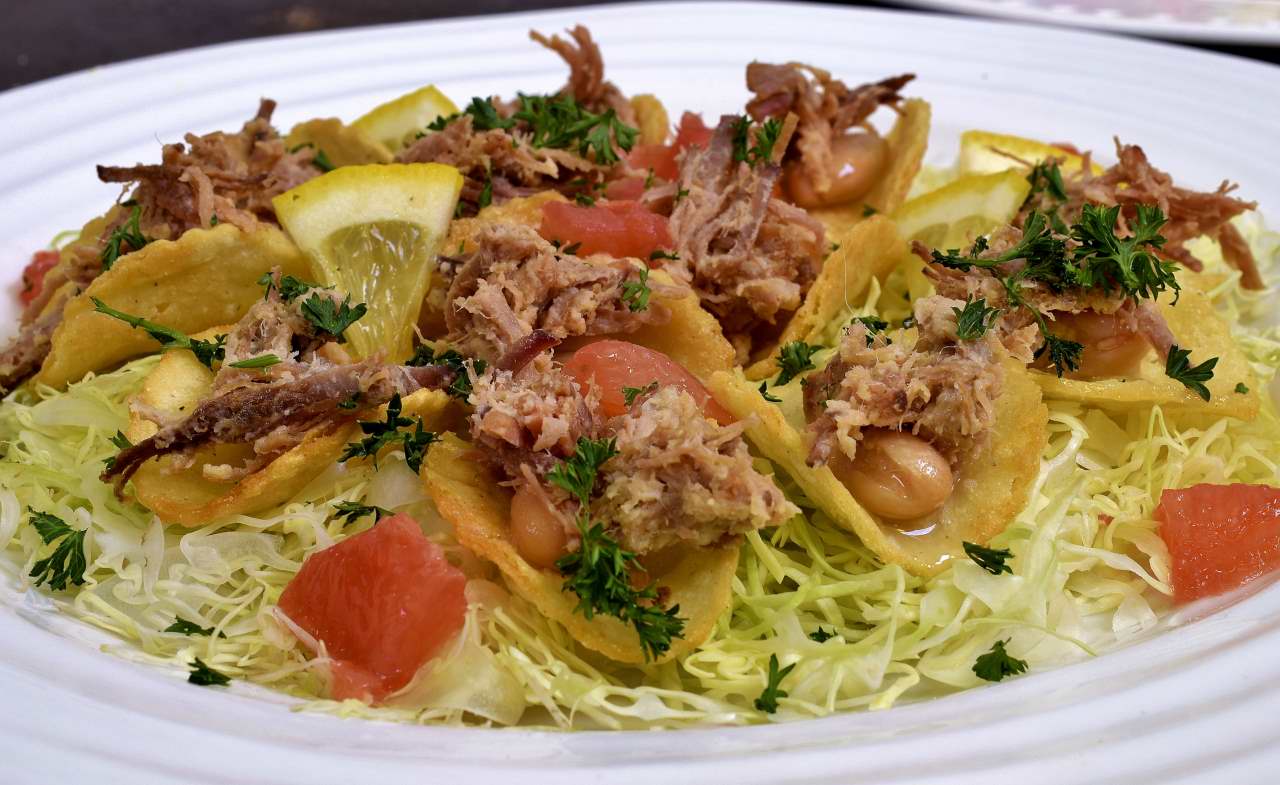
 Leave it to the French to come up with something so simple in appearance but with such a complex flavor and texture profile.
Leave it to the French to come up with something so simple in appearance but with such a complex flavor and texture profile.
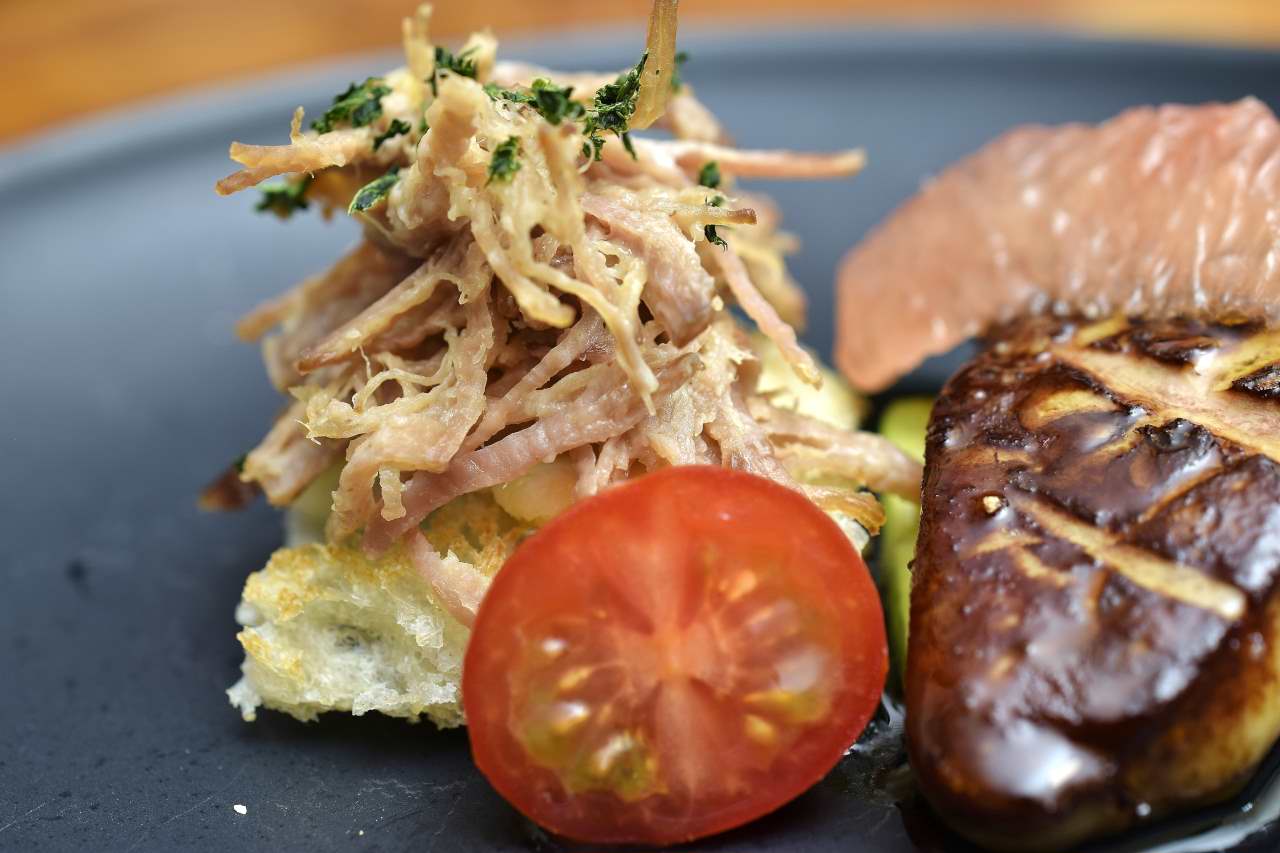
The texture and flavor is complex enough to stand up to many accompaniments–pan-seared foie gras on avocado with grapefruit.
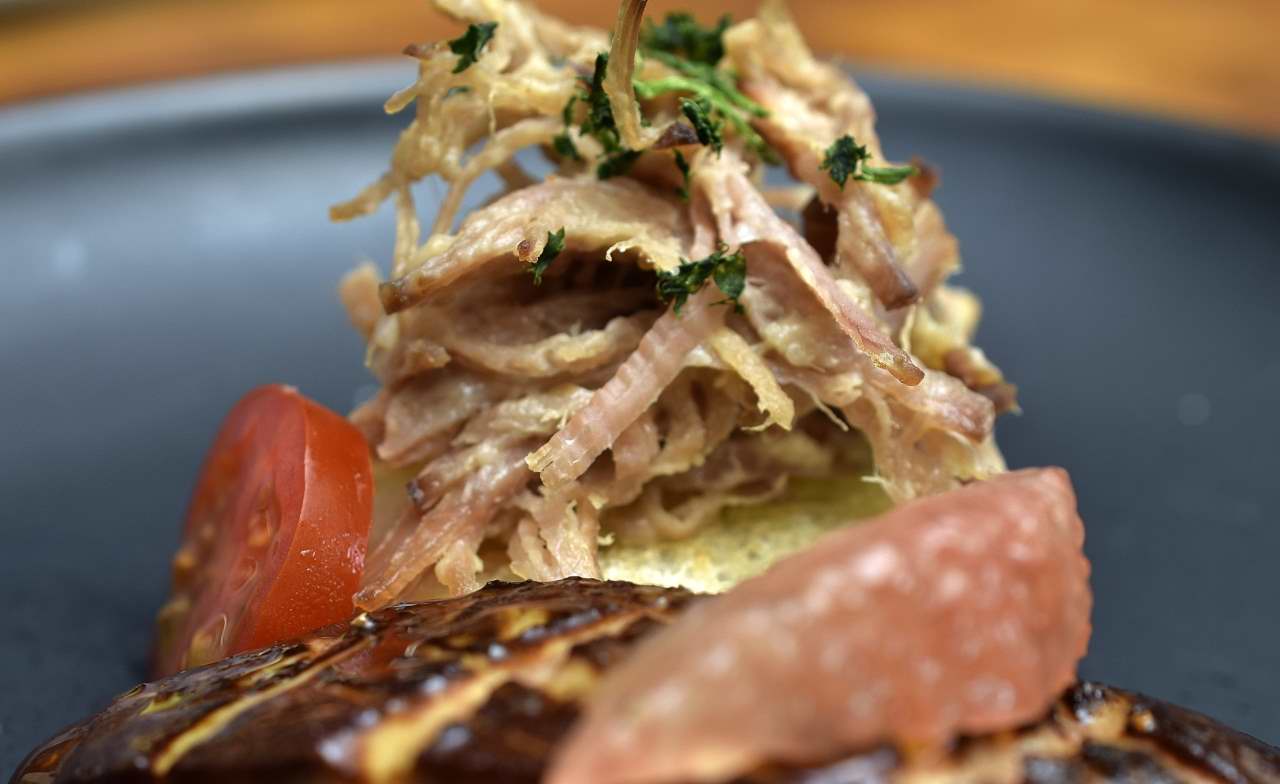
Well developed, Rillettes belie their humble origin. Shredded beef is familiar to anyone who has ever explored Mexican or Tex-Mex cuisines, so I decided to experiment a bit.

Not quite Tex-Mex: crispy fried corn mini-tortillas, Cannelini beans, shredded cabbage, grapefruit, lemon–and of course, parsley. How pico de gallo got its name is in question, but it is the perfect addition to this garden friendly alternative to chips and dip.
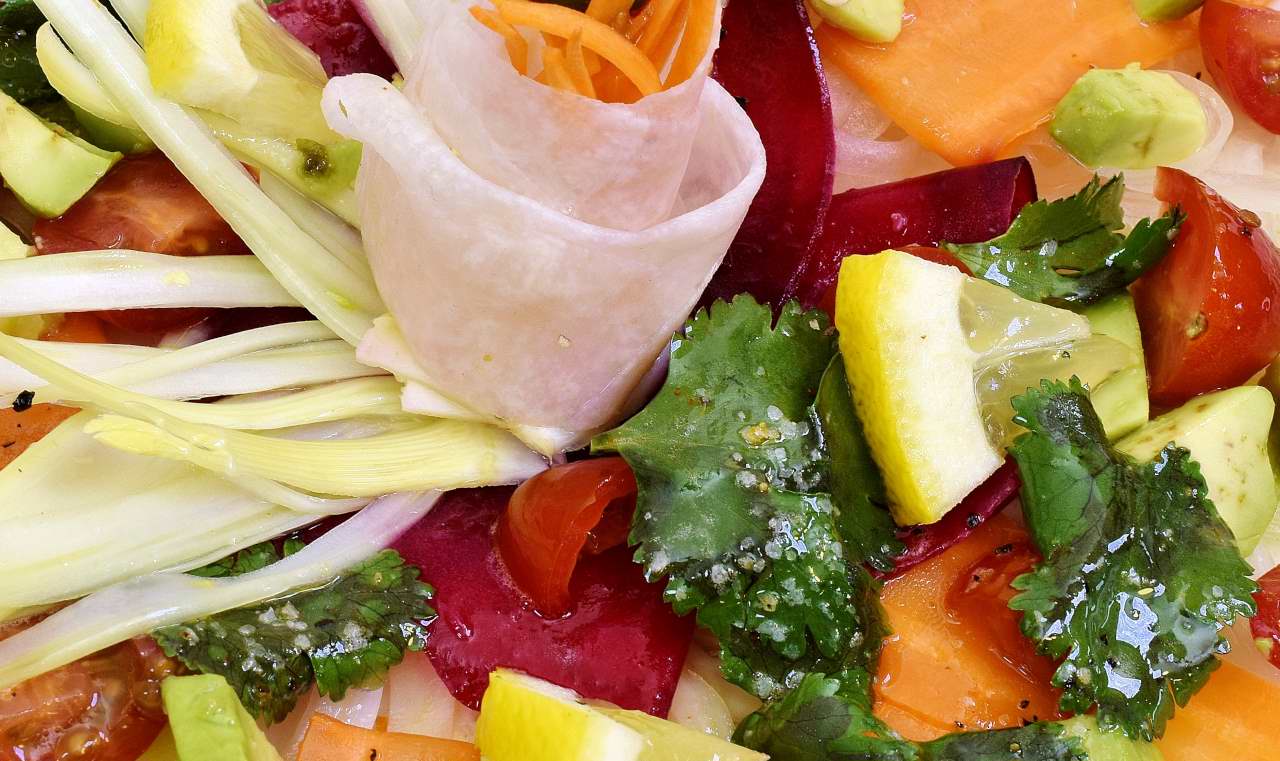
This pico included the conventional marriage of jicama, cucumbers, carrots, avocados, onion ribbons and tomatoes, etc. with the Francophile addition of thin sliced sweet anise, grapefruit and cured beets. Cilantro, lemon juice, kosher salt and ground black pepper.
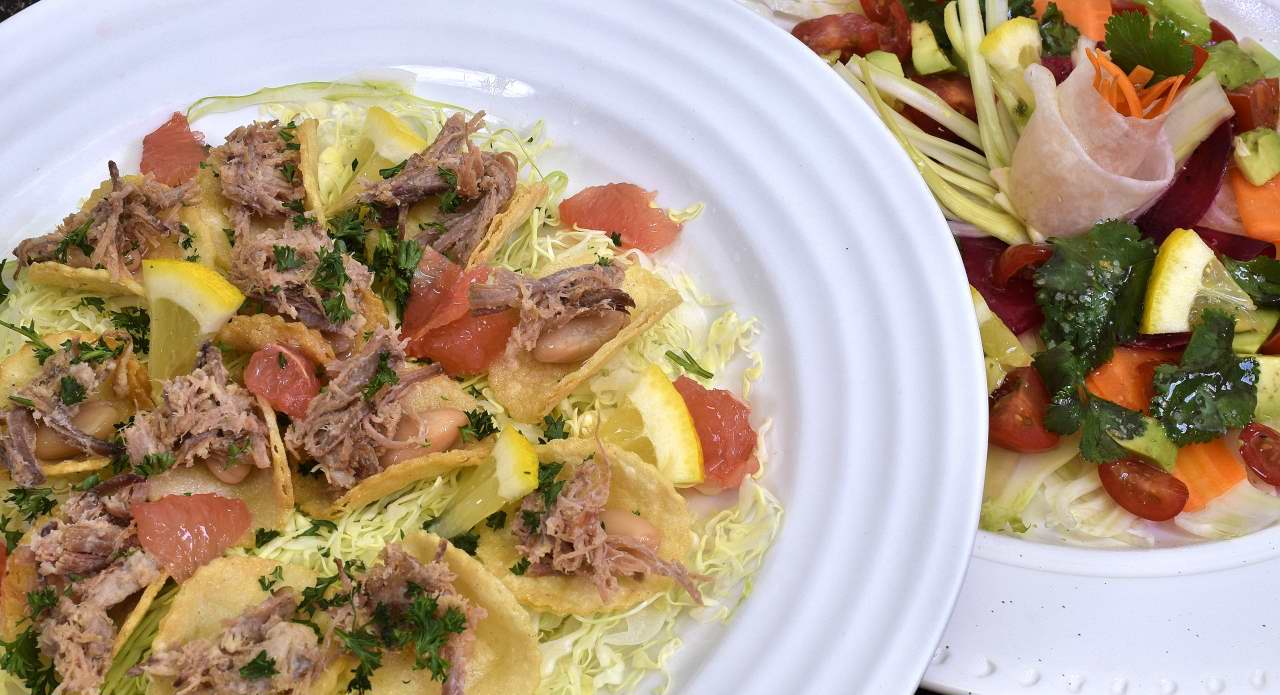
Together, some very splashy colors.

Mucho gusto/bon appetit
Norm King
